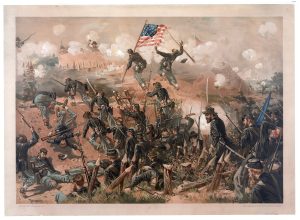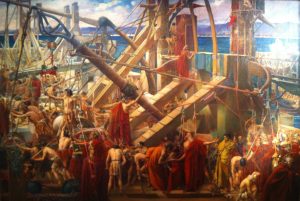Introduction
The Germans’ sharp defeats by the Russians at Moscow and Stalingrad, led by Marshal Georgy Zhukov, brought us into 1943. Hitler did not declare war on the Americans because the nominally peaceful Japanese did not bomb Pearl Harbor, and the Americans stayed strictly neutral. This neutrality led America to limit foreign aid to aid for Britain.
Let’s see what would happen after 1943 if the ever-increasing Russian Lend-Lease supply and the US military power on other fronts never existed. Would Germany win, lose, or draw the war against Russia?
Without the massive influx of Lend-Lease supplies and the diversion of German forces to other fronts, the war on the Eastern Front after 1943 would have likely been a protracted and bloody stalemate, with neither side achieving a decisive victory.
Expanding on your excellent points:
On the Soviet Side: Your emphasis on resource depletion is spot on. The sheer scale of Lend-Lease is often underestimated. Beyond the tanks and planes, the aid that would have been most sorely missed was the “war-movers”:
- Logistics: The USSR received nearly 2,000 locomotives and over 11,000 rail cars from the US. Without them, the Soviet ability to move troops and supplies across their vast distances—a key advantage they used to encircle the Germans at Stalingrad—would have been crippled. They would have also missed the over 400,000 trucks, which gave the Red Army a level of operational mobility it had never possessed before.
- Raw Materials & Fuel: The Soviets would have been critically short of high-octane aviation fuel, aluminum for aircraft production, and explosives. Their air force, which eventually gained superiority, would have been technologically and numerically inferior.
On the German Side: Your point about a “Focused War Effort” is the most critical advantage. In this scenario:
- No War in the Skies Over Germany: Without the US 8th Air Force joining the British bombing campaign, German industry would have been far more productive. Critical factories for synthetic oil, ball bearings, and advanced aircraft (like the Me 262 jet fighter) would have operated with much less disruption, potentially allowing Germany to achieve a technological edge on the battlefield in 1944-45.
- Undivided Elite Forces: The most experienced Luftwaffe fighter wings, elite SS Panzer divisions, and hundreds of thousands of veteran soldiers would not have been tied down in Italy, the Balkans, or waiting in France for an invasion that never came. All of this combat power would be directed east.
Potential Outcomes:
- Prolonged War of Attrition: The most likely outcome would have been a protracted and bloody stalemate, with both sides suffering immense losses but neither achieving a decisive victory.
- Negotiated Peace: Eventually, both sides might have been forced to seek a negotiated peace, likely resulting in a divided Europe and a significantly weakened Soviet Union.
- German Victory: While not impossible, a German victory would have been tricky without American intervention. The Soviets would have likely fought on despite overwhelming odds, making a complete German conquest highly unlikely.
Overall, the absence of American aid and the German military’s focus on the Eastern Front would have dramatically altered the course of World War II. The war would have been longer, bloodier, and its outcome far less confident.
Let’s take a worldwide view of the problem.
Raymond Goldsmith, head of the economics and planning division of the US War Production Board, in “Power to Victory,” published an estimated balance sheet of munitions prices (defense outlays) of World War II’s major belligerent powers from 1935-44:
1935-9 1940 1941 1942 1943 1944
USA 0.3 1.5 4.5 20 38 42
Canada 0 0 0.5 1 1.5 1.5
UK 0.5 3.5 6.5 9 11 11
USSR 1.6 5 8.5 11.5 14 16
Germany 2.4 6 6 8.5 13.5 17
Japan 0.4 1 2 3 4.5 6
Notes:
- All figures are in billions of US dollars, adjusted to 1944 munitions prices.
- It’s important to note that these are estimates, and the actual figures may vary.
- The table highlights the massive increase in military spending by all major powers during the war, particularly the United States, after its entry in 1941.
- It also underscores the immense economic cost of World War II.
Goldsmith commented: “The cold figures … probably tell the story of this war in its essentials as well as extended discussion or more elaborate pictures: the initial disadvantage of the Western Allies; the surprising stand of the USSR; the rapid improvement in the United Nations’ position in 1943; their decisive superiority over Nazi Germany in 1944; and the rapid collapse of Japan once the theater of war was restricted to the Pacific. They go back to the full thesis, dear to the economist’s ear, that whatever may have saved the United Nations from defeat in the earlier stages of the conflict, what won the war for them, in the end, was their ability to produce more, and vastly more, munitions than the Axis.”
The US spent 45% of the world’s output on munitions in 1944! The USA, Canada, UK, and USSR had a factor of over three from Germany and Japan (70.5 compared to 23). The Allies undoubtedly won the war over the Axis due to superior production.
Because the Russians fought most of the Nazi divisions, the Americans could afford to lend Russia Lend-Lease, about 7% of US defense outlays in 1943-44.
[Look also at the Germans, who failed to grow production, staying at $6 billion from 1940 to 1941. After France’s fall, the Germans tried to go to their peacetime economy rather than war! Without this stagnation, Germany might have won the battle against the Soviets in 1941!]
The Germans would try to play catch-up in 1943, with $8.5 billion in 1942 increasing to $13.5 billion in 1943. That’s why 1943 would be so crucial to the Russians without the Americans’ aid in the war.
Lend-Lease was a vital part of the Russian economy during WWII, with the Americans in the war. Highlights of this:
- The areas lost to the German 1941-42 offensives drastically undermined Soviet food production. To relieve this situation, the Americans sent 4,291,012 tons (1941-45) of dehydrated food supplies to the Soviets.
- The Americans sent them 1,911 locomotives and 11,225 freight cars, equaling 92.7% of wartime production.
- The Soviet military provided logistical assistance with 409,526 US-made trucks. By 1945, nearly a third of the Soviet Army’s trucks were US-built.
- One-half of the aluminum, or about 350,000 tons, used by the Soviets during the war was Lend-Lease! Soviet statistics show that wartime aircraft production would have been about two-thirds without these aluminum shipments.
- One major problem was that the Soviet oil processes were outdated and little better than kerosene. Without the 2,670,371 tons of high-grade aviation petroleum exports used for aircraft fuel and blending agents used to upgrade Soviet petrol, the Russian Air Force would have been severely degraded.
Let’s see the overall German and Soviet advantages:
German Aircraft Advantage
https://en.wikipedia.org/wiki/Eastern_Front_(World_War_II)
1942 1943 1944
German Aircraft 15556 25527 39,807
Soviet Aircraft 25436 34845 40,246
In 1944, the Russians and the Germans each produced around 40,000 aircraft. The Russians had to get aluminum from the Americans to manufacture this many.
The additional advantages of the German aircraft:
- The Germans would have released thousands of aircraft if they did not have to fight with the American planes.
- The Russians received 53% of their high-octane aviation fuel from Lend-Lease.
- The Germans had advanced jet aircraft, the ME-262, and Russia had none!
- The German pilots were doubtless better than their Soviet counterparts.
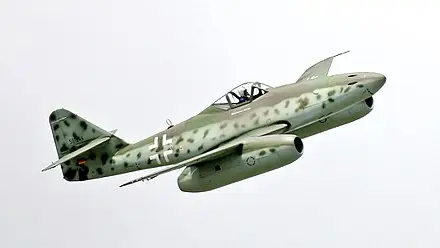 ME-262 (Wikipedia Image)
ME-262 (Wikipedia Image)
After all, the American plane attacks against the German tank forces showed a more significant portion of tank kills than the American ground attacks in 1944-45.
Soviet Troop, Artillery, Tank, Oil, and Partisans Advantage
https://en.wikipedia.org/wiki/Eastern_Front_(World_War_II)
1942 1943 1944
German Tanks and self-propelled guns 9,300 19800 27,300
Soviet Tanks and self-propelled guns 24,963 24,089 28,963
The Russians had superiority over the Germans in the following areas:
- The Russians had a superiority in tanks. The Soviet tanks are just as good as the Germans’.
- The Russians had up to 10.3 million soldiers in 1943 compared to 3.4 million Germans, with the same ratio in artillery.
- The Germans are short of petrol. Though generally of low quality, the Russians had about twice as much oil as the Germans.
- The Russians had about 550,000 partisans behind the front lines.
- The Germans still had to face the British.
- Georgy Zhukov was a vastly superior commander and strategic mastermind to Hitler!
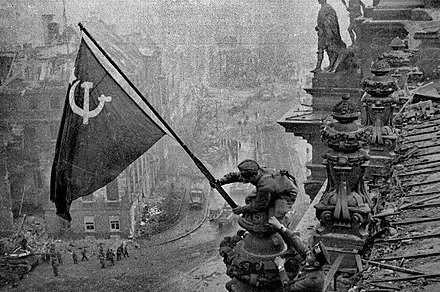
Berlin During 1945 (Wikipedia Image)
Lend-Lease Aid to Russia
 Stalin, FDR, and Churchill (Wikipedia Image)
Stalin, FDR, and Churchill (Wikipedia Image)
The Lend-Lease Act, passed by the U.S. Congress on March 11, 1941, granted President Franklin D. Roosevelt the authority to provide military aid to any country whose defense was considered vital to the security of the United States. Initially, this legislation aimed to support Britain and Greece, battling Axis forces on the brink of collapse. Through this act, Roosevelt could supply crucial war materials such as weapons, food, aircraft, and other defense articles without requiring immediate payment. This allowed the U.S. to assist the Allies while maintaining its official neutrality in the war.
However, when Hitler attacked the Soviet Union in late June 1941 under Operation Barbarossa, Roosevelt swiftly extended the provisions of Lend-Lease to include the Soviet Union. Despite ideological differences and Stalin’s brutal regime, Roosevelt saw the necessity of supporting the Soviets in their fight against Nazi Germany. The assistance provided through Lend-Lease, including vast amounts of supplies and equipment, was instrumental in bolstering the Soviet war effort during critical moments in the conflict, further weakening the Nazi forces and contributing to the eventual Allied victory.
While Lend-Lease supplies to Russia were negligible in 1941, shipments increased steadily as the war progressed. By September 1945, the US had sent 17,499,861 tons of supplies.
The US sent Lend-Lease aid to the Soviets for several reasons:
- The US advocated helping its allies to the fullest extent possible.
- Russia was the war front where they could use US supplies most efficiently.
- After the war, Roosevelt sought to normalize relations with the Soviet Union and viewed Lend-Lease as a significant step toward that goal.
- The Russians needed to fight against the Japanese once the war with Germany had ended.
- The Russians were principal members of the world’s future United Nations organization.
On the other hand, the US didn’t want to send Lend-Lease aid to the Soviets because of the genocidal atrocities Stalin had perpetrated on his people. For example, the Ukrainian famine, known as the Holodomor, a combination of the Ukrainian words for “starvation” and “to inflict death,” cost 3.9 million lives in 1932-33. This was caused by Stalin, who wanted to replace Ukraine’s small farms with failed Communism and ship grain to foreign nations for some hard-needed cash for industrialization. Roosevelt recognized Stalin and Soviet totalitarianism as evil!
However, Churchill said, “No one has been a more consistent opponent of Communism for the last twenty-five years. I will unsay no words I have spoken about it. But all this fades away before the spectacle which is now unfolding. The past, with its crimes, its follies, its tragedies, flashes away.… The Russian danger is, therefore, our danger, and the danger of the United States, just as the cause of any Russian fighting for hearth and house is the cause of free men and free peoples in every quarter of the globe.”
Hitler was of greater evil than Stalin.
This paper analyzes Lend-Lease’s economic and military impact on the Russians. It shows that Lend-Lease significantly contributed to the rapid Soviet advances into Eastern Europe and Germany from 1944 to 1945.
This paper will be divided into five sections:
- Lend-Lease criticality to the Russians.
- Lend-Lease Statistics.
- Lend-Lease was crucial in increasing the Red Army’s mobility, providing foodstuffs, transportation equipment, raw materials, weapons, and miscellaneous supplies.
- Red Army’s use of blitzkrieg tactics, especially in winter.
- Speculation: If Hitler did not declare war on the Americans due to the nominally peaceful Japanese refraining from bombing Pearl Harbor and the Americans staying strictly neutral, who would win the war, Germany or Russia?
Lend-Lease Was Critical to the Russians
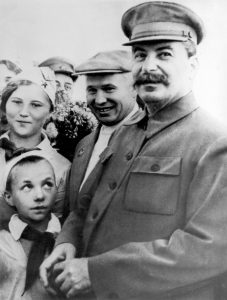
Khrushchev and Stalin (Wikipedia Image)
Joseph Stalin said during the Tehran Conference in 1943:
“Without American machines, the [Russians] could never have won the war.“
Was this just wartime politics? Nikita Khrushchev, the First Secretary of the Communist Party of the Soviet Union from 1953 to 1964, in his memoirs, says:
“I would like to express my candid opinion about Stalin’s views on whether the Red Army and the Soviet Union could have coped with Nazi Germany and survived the war without aid from the United States and Britain. First, I would like to talk about Stalin’s repeated remarks made several times when we were ‘discussing freely.’ He bluntly stated that we would not have won the war if the United States had not helped us. If we had to fight Nazi Germany alone, we could not have stood up against Germany’s pressure, and we would have lost the war. I fully agreed with him when I listened to his remarks, and I am even more so.”
Now, the military side of this equation. Soviet Marshal Georgy Zhukov, the top Russian Field Marshal during WWII, in a confidential interview with the wartime correspondent Simonov said:
“Today [1963], some say the Allies didn’t help us … But listen, one cannot deny that the Americans shipped over to us material without which we could not have equipped our armies held in reserve or been able to continue the war.”
Statistics: Graphs Involved with Lend-Lease
https://warwick.ac.uk/fac/soc/economics/staff/mharrison/public/lendlease.pdf
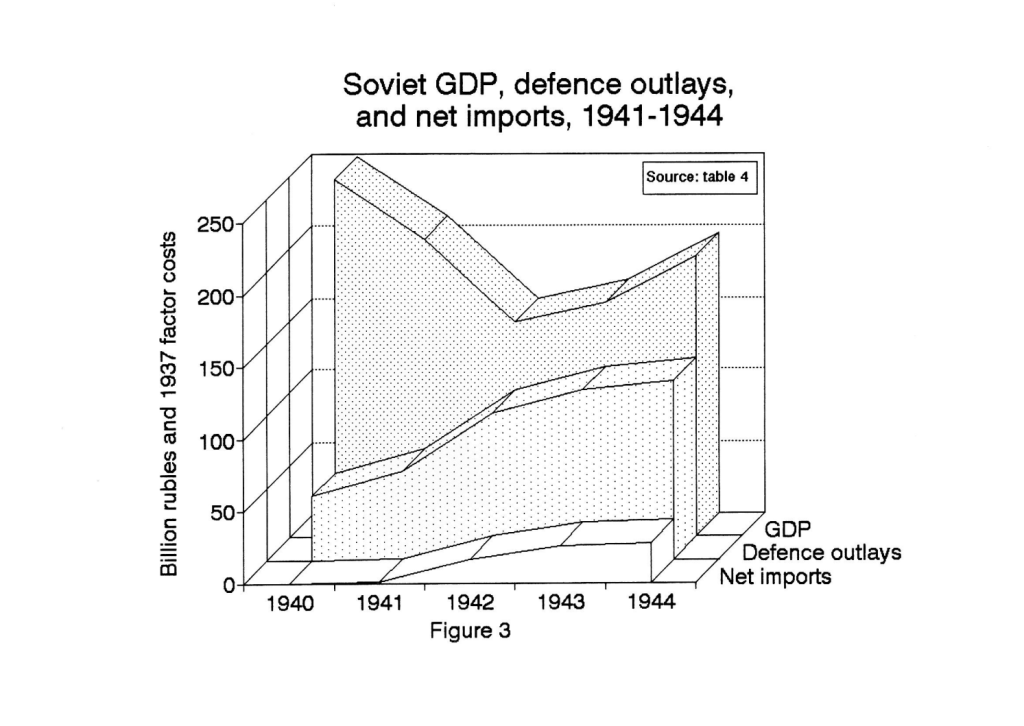
Look at Figure 3 of Mark Harrison’s diagram. The Soviet GDP fell to 150 billion rubles as the German invasion penetrated the Russian border within 40 miles of Moscow in 1941. The first net imports arrived in 1941, although in minuscule yet proliferating portions. Defense outlays rose with the Soviet wartime economy. Look at the net imports compared to the defense outlays in 1943 – 1944; net imports (Lend-Lease) were about 16% of the defense outlays in the USSR.
Year Amount (tons) %
1941 360,778 2.0
1942 2,453,097 14.1
1943 4,794,545 27.4
1944 6,217,622 35.5
1945 3,673,819 21.0
Total 17,499,861 100
(Wikipedia Image)
The table shows that 83.9% of the Lend-Lease aid to the USSR came after 1943. It took some time for the American industry to achieve its maximum defense production.
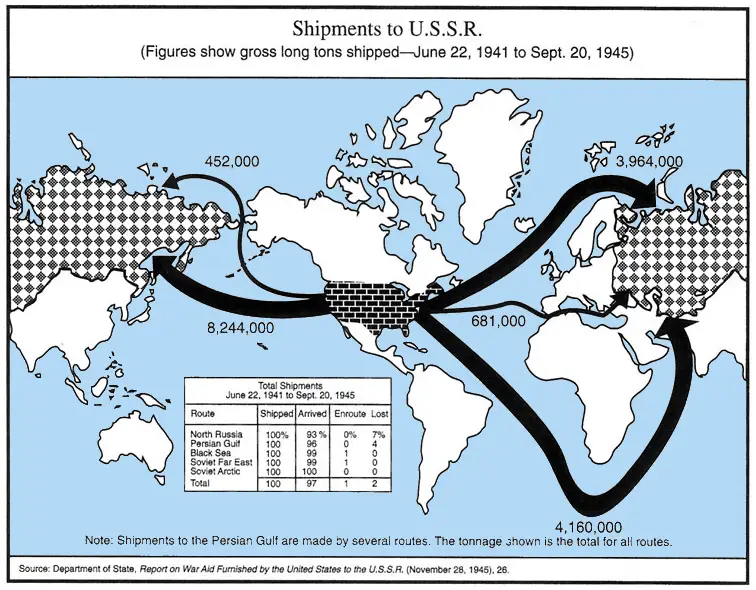
Shipments to USSR Lines Coming from the United States (Wikipedia Image)
German submarines, aircraft, and battleships made the Allied Norway-to-Murmansk route the most treacherous during WWII. The Germans sank 7% of the ships following this route.
The Pacific Route commenced in October 1941 through Archangel in Russia. Japan and the Soviet Union maintained strict mutual neutrality throughout the conflict, changing only in August 1945. Due to this neutrality, the Russians could move goods only in Soviet-flagged ships and, as the Japanese inspected them, could not include war materials. Therefore, the Russians used this route to transport food, raw materials, and non-military goods such as lorries and other road vehicles, rail transport, rolling stock, aluminum, and steel.
As the war progressed, new transportation routes, such as those through Persia, were exploited.
Lend-Lease supplies consisted mainly of unique materials and items that filled critical shortages in Soviet ordnance, including food, transportation equipment, and certain raw materials. Lend-Lease played a crucial part in Russia’s manufacturing.
Russian Lend-Lease Supplies Played a Critical Role
Foodstuffs
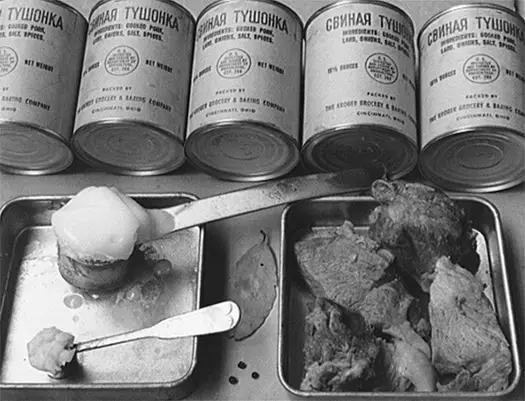
Preparing Canned Pork for Shipment to the USSR (https://www.loc.gov/item/today-in-history/october-23)
The areas lost to the German 1941-42 offensives drastically undermined Soviet food production. Ukraine and the North Caucasus were lost, accounting for 23% and 10.6% of Russia’s gross grain production, respectively. Labor became scarce. The percentage of female tractor drivers climbed from 4% in 1940 to 45% in 1942. There were 48% fewer cattle, 33% fewer sheep and goat herds, and 78% fewer hogs in 1942 than in 1940.
The Soviets reacted to this disaster by increasing grain production in central Russia. Russia planted 2.3 million more acres under cultivation in 1942 than in 1940. Also, the Soviets increased winter crops in the Siberian region by 64% over their 1940 level.
Yet despite their efforts, the Russians failed to reach their pre-war per capita production level. According to Walter Thurston of the Soviet Embassy, in a message to the State Department on 20 March 1942, there were “130,000,000 Russians, including some 20,000,000 refugees, to feed.” He estimated it would take 35,000,000 tons of bread to feed this population: “With requisite seed reserves of some 5,000,000 (and an estimated production of about 32,200,00 tons), this leaves a bread cereal deficit of more than 8,000,000 tons.”
Stalin said to Rear Adm. William H. Standley in October of 1942, “The Germans had taken all of Ukraine and the North Caucasus and much of the black soil region.” He said, “The Soviet Union would need 2,000,000 tons of wheat and a correspondingly large quantity of concentrated foodstuffs such as butter, condensed milk, lard, meat products, and so forth.”
The Americans sent 4,291,012 tons (1941-45) of food supplies to the Soviets to relieve this situation, most of which were used by the Red Army. It is deceptive because most of this food was dehydrated, reducing its size and weight by sevenfold. Deane said, “Assuming that the Red Army had an average strength of 12,000,000 men, the food sent to Russia was sufficient to supply each man with more than one-half pound of fairly concentrated food per day.”
Transportation Equipment
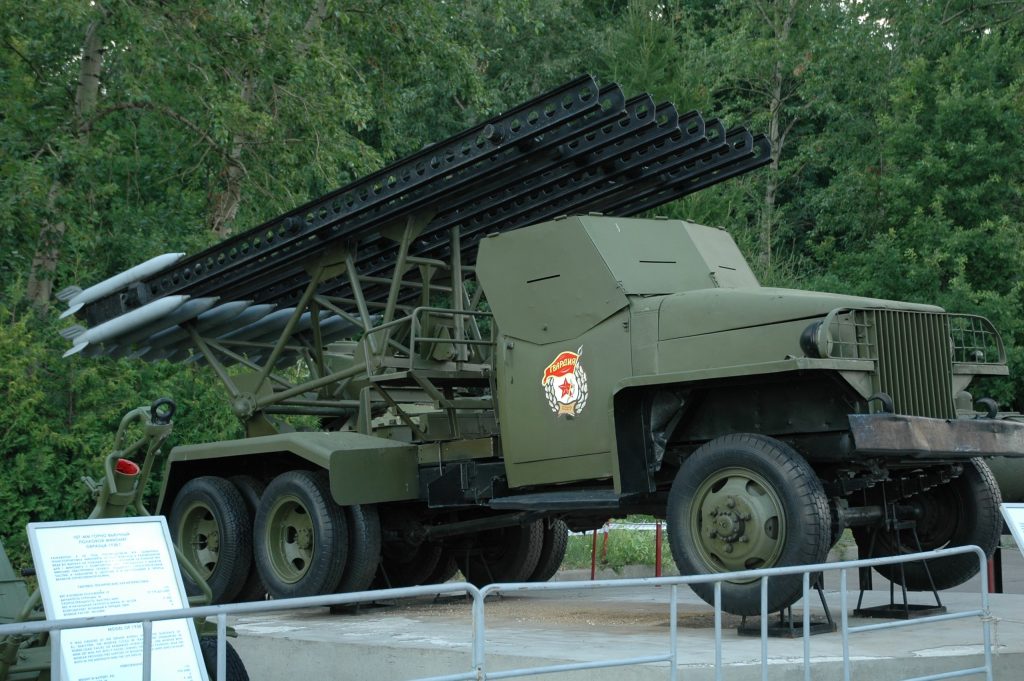
BM-13N Katyusha on a Lend-Lease Studebaker US6 truck (Wikipedia Image)
According to Vice-Chairman Voznesensky:
“How smoothly the Soviet economic system can operate depends on the level of the country’s transport services, for their importance is particularly great in the Soviet Union, whose territory covers 22.3 million square kilometers, and where the average haul of goods is in the neighborhood of 700 kilometers from producer to consumer.”
An extensive railway network, a modern communications system, and an array of transport vehicles to supply frontline troops are essential, especially during wartime.
With the Nazi invasion in 1941, the Russians took their 20,000 locomotives and 500,000 freight cars and moved their manufacturing east out of the European theater behind the Ural mountains. A moderate amount of their rail transport fell into Germany’s hands.
With the coming of Lend-Lease, the Russians didn’t want to produce rail transport. They tried to make tanks anyway, and American rail transport was much more modern. The Americans sent them 1,911 locomotives and 11,225 freight cars, equaling 92.7% of US wartime production.
409,526 US-made trucks provided logistical support to the Soviet military. By 1945, nearly a third of the Soviet Army’s trucks were US-built. Trucks such as Dodge and Studebaker were quickly the best in their class on either side of the Eastern Front.
Considering a Russian mobile division contained 580 trucks, the trucks sent to Russia could outfit 706 of these mechanized units. The Russian Army never had over 400 divisions.
In describing a Russian offensive, “They [the American trucks] appeared to be the only sort of vehicles used for convoy work. The roads were jammed with transportation of all descriptions, but except for American trucks, there did not appear to be enough to set up convoys that could be moved as units.”
Modern communications equipment also made a vital contribution to the Red Army. During the war, 422,426 field telephones, 38,871 radio stations, and 670,000 miles of wire helped tie together the 2,000-mile Russian front.
Raw Materials, Weapons, and Miscl. Supplies.

North American B-25; Soviet Aircraft (https://lend-lease.net/gallery-en/b-25-mitchell/)
Lend-Lease provided the Russians with much-needed raw materials, weapons, and supplies.
The Russians received 2,589,766 tons of steel between 1941 and 1945. Although this was only 5.93% of Soviet output, most of it was special steel, such as high-speed tool steel and hot-rolled aircraft steel. Thus, Russia was not burdened with manufacturing high-grade steel during the war.
https://en.wikipedia.org/wiki/Eastern_Front_(World_War_II)
Thousand tons
1942 1943 1944
German Aluminum 264.0 250.0 245.3
Soviet Aluminum 51.7 62.3 82.7
Lend-Lease’s exports of other nonferrous metals (781,663 tons) were also significant. Half of the aluminum, or about 350 thousand tons, used by the Soviets during the war was Lend-Lease! Due to a shortage of aluminum, Soviet statistics show that wartime aircraft production would have been about two-thirds from 1943 without these aluminum shipments [unlike the Germans, which have ample aluminum stores].
Nearly three-fourths (391,771 tons) of copper shipped to Russia by Lend-Lease was used in communications equipment. The total shipments of nonferrous metals, such as zinc and manganese, also formed significant percentages of Soviet use.
As for the Russian petroleum industry, Lend-Lease again came to the rescue! The problem was that the Soviet oil processes were out of date. Deane said, “Ordinary Russian gasoline was little better than American kerosene.” The 2,670,371 tons of petroleum exports transferred to the Soviets were high-grade aviation fuel for aircraft and blending agents to upgrade Soviet petrol.
The weapons sent to Russia helped the Red Army to various degrees. The Red Army used about 7,000 Lend-Lease tanks, although these were much inferior to the Red Army tanks.
Lend-Lease airplanes proved to be of greater use. The Soviet air force received 18,200 aircraft, including 9,430 fighters and 708 transport planes. 2,908 A-20 light bombers and 862 B-25 medium bombers sent to Russia proved very useful in the low and medium-altitude operations demanded on the eastern front. Former Under-Secretary of State Edward Stettinius described the Russian attitude towards these planes: “American representatives who have talked with pilots of the Red Airforce at the front have told me that the Russians are enormously impressed with the performance of our A-20 in such fighting.”
In addition to the tank and aircraft reinforcements, the Russians received 131,633 45-caliber submachine guns and about 8,000 anti-aircraft guns. These weapons helped erase the initial German superiority in the average soldier’s firepower.
The Americans also sent many other items to the Russians. Twenty million winter and 45 million summer uniforms were shipped, and 14.5 million shoes were shipped.
As part of Lend-Lease aid, the Russians received power stations, winter caulking fluid, chemicals, and even a tire factory.
Soviet Marshal Georgy Zhukov and Soviet Blitzkrieg Tactics
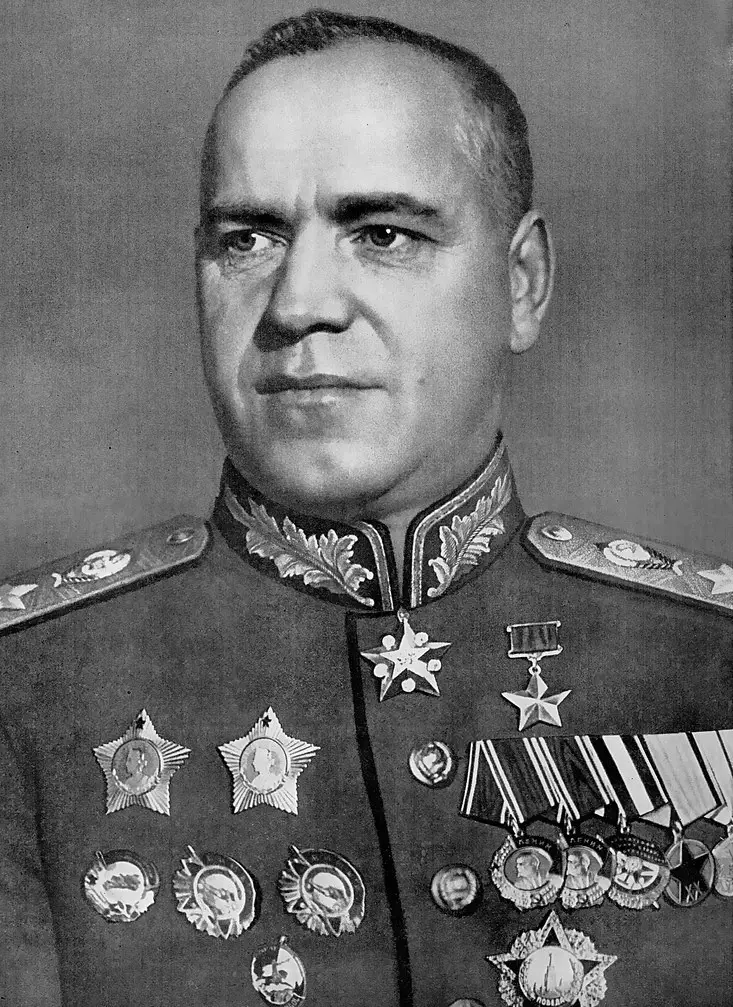
Zhukov 1944 (Wikipedia Image)
Zhukov was born in Strelkovska, Russia. In 1896, he served as an officer in the Army during WWI. After the Bolsheviks overthrew the Russians in November 1917, Zhukov quickly joined the Red Army, serving as Cavalry and armored commander.
Stalin launched a bloody purge in 1937. Forty thousand officers were either executed or imprisoned. Contrary to the officers, Zhukov said, “Generalissimo Stalin directed every move… made every decision… He is the greatest and wisest military genius who ever lived.”
The Japanese invaded Mongolia, an ally of the Soviet Union, in the summer of 1939. At Khalkhin Gol, Georgy Zhukov led a coordinated attack by infantry, tanks, and aircraft that crushed the Japanese. The Japanese agreement with the Soviet Union was to withdraw from the borders with Mongolia and sign a peace treaty.
Stalin removed Zhukov from the Japanese in 1940 and sent him to face the Germans who invaded in June 1941. In the winter of 1941, he carefully organized Moscow’s defensive position and successfully defended it from German attacks. Later that winter, Zhukov launched his offensive and drove the German Army, unprepared for winter, from Moscow, the first defeat by the Nazis in WWII. Hitler lost between 300 – 400 thousand, and Zhukov lost around a million men, losses Zhukov could afford because of the superiority in troops. Zhukov was promoted to Stalin’s deputy and advanced to the command of the entire eastern front.
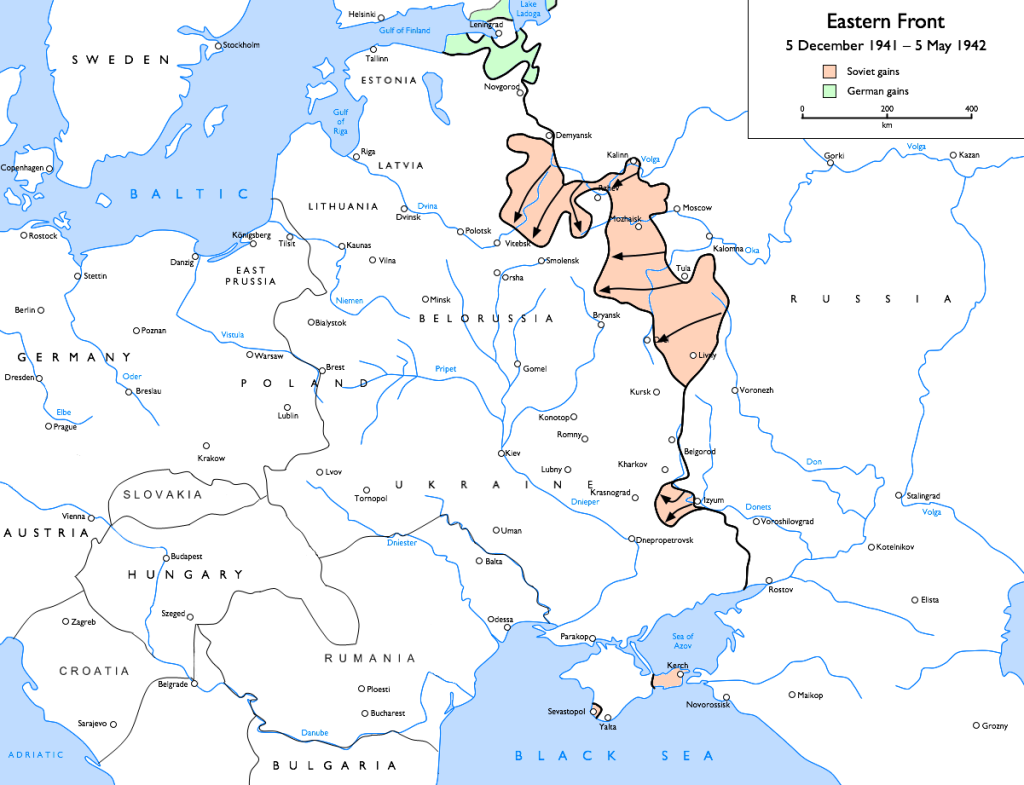
Soviet Offensive Winter 1941 (Wikipedia Image).
Zhukov was transferred over to Stalingrad in 1942. His Red Army’s strategy, similar to the Blitzkrieg attack by the Germans, was as follows:
- Zhukov found a weak point in the enemy line.
- At this point, they amassed vast amounts of armor.
- These units then launched an attack to break through the enemy line.
- After they accomplished this, the victorious tank units would spread into the enemy’s rear areas.
- Left behind by the advance’s speed, dive bombers and attack aircraft would replace artillery.
- The German 6th Army was ambushed in Stalingrad and could have hastily retreated, but “no retreat.” Hitler wouldn’t allow that, and the Russians closed the trap. They would be forced to surrender their supply cut and communications centers occupied.
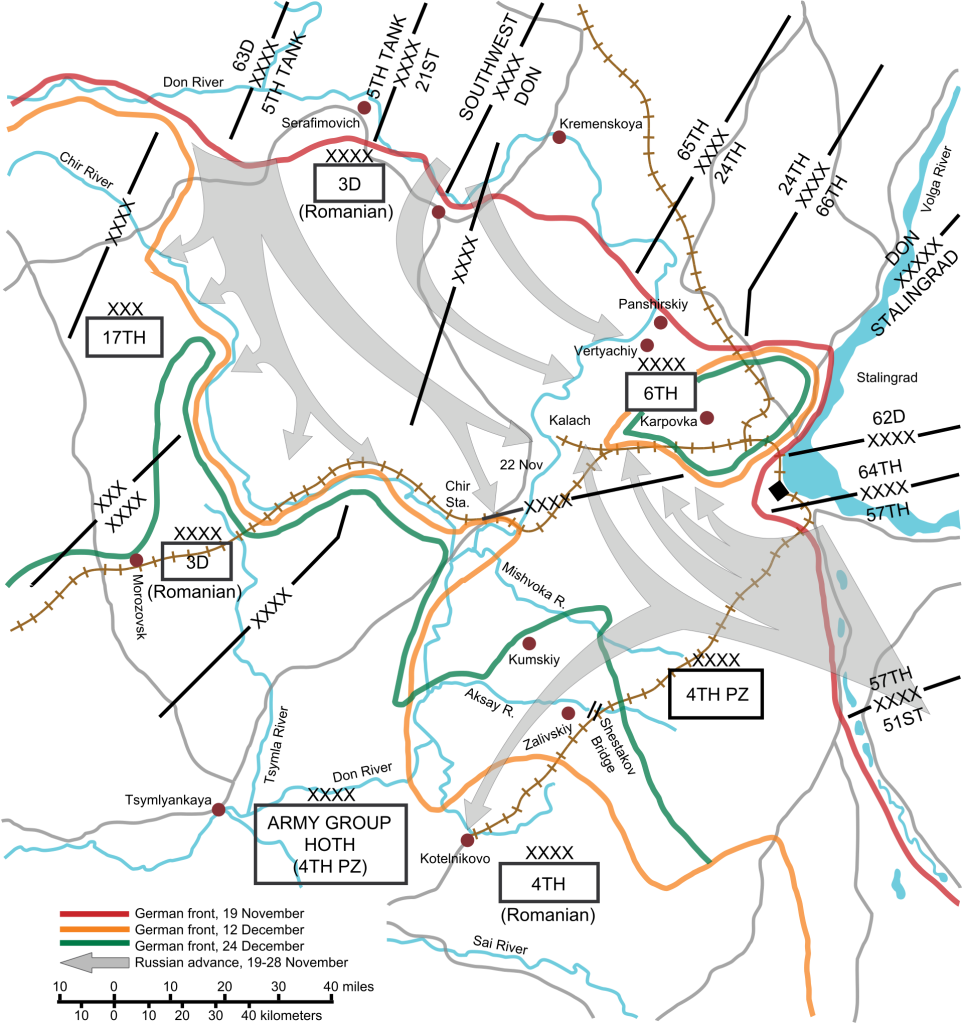
Stalingrad (Wikipedia Image)
Zhukov accelerated his divisions in 1943. According to Deane, the Russian blitzkrieg ability centered around 60 mobile attack units, “which could be shifted rapidly from place to place on their extended front to provide mass power for a breakthrough in their chosen areas.” Soviet mobility would have been impaired without Lend-Lease. Jones said, “In the summer and fall of 1943, the speed of the Red Army advance doubled over any previous offensive progress. Soviet mobile units averaged 30 to 40 kilometers per day, while others increased their pace by 10 to 25 kilometers. The 148,286 trucks, jeeps, and motorcycles received in the Soviet Union by 30 June 1943 contributed greatly to the Soviet speed.”
The damn burst. Zhukov won victory after victory until he reached the center of Berlin in 1945 and forced Germany’s surrender.
Americans Not in the War?
According to the Wikipedia article Eastern Front World War II, Comparative strengths of combat forces, Eastern Front, 1941–1945, in July 1943, the Russians were up to 10.3 million soldiers compared to the Germans, 3.4 million, 400,000 Finns, and 150,000 Romanians and Hungarian soldiers. However, of the 10.3 million Russian troops, only about 60% were equivalent to the 3.4 million German troops. The other 40% of Russian troops were inferior to the German forces.
Meanwhile, on other fronts, Germany was forced to keep significant forces stationed in the west to counter Britain, a major military power. By 1943, about 1.5 million German troops, or 30% of Germany’s total military forces, were deployed to face the British on the continent and across the Mediterranean. These forces were essential in maintaining German control over occupied Europe and defending against British air raids and invasions, such as in North Africa and Italy.
https://en.wikipedia.org/wiki/Eastern_Front_(World_War_II)
1942 1943
German Tanks 9300 19800
Soviet Tanks 24446 24089
In 1942, the year of Stalingrad, the Soviet military produced 24,446 tanks compared to 9,300 tanks made by the Germans. The Soviets built many thanks to the Chelyabinsk tractor works, known simply as Tankograd or “Tank City.” During the conflict, Tankograd made 18,000 tanks, 48,500 tank diesel engines, and over 17 million units of ammunition.
The Soviet T-34 tanks in 1941-42 were better than the German tanks.
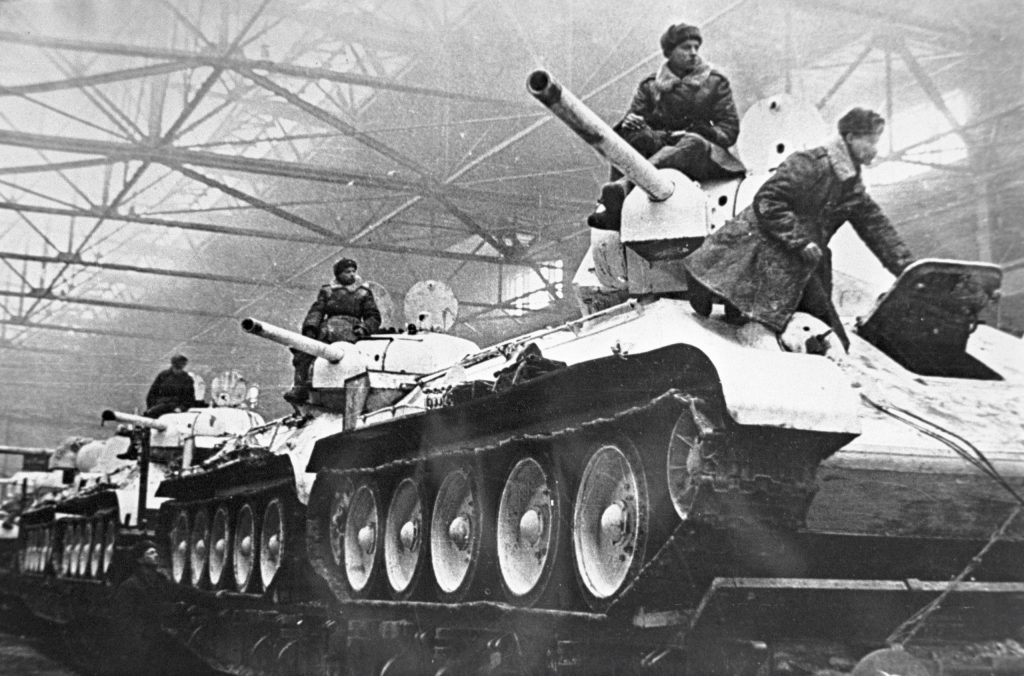 T-34 Tank (Wikipedia Image)
T-34 Tank (Wikipedia Image)
Hitler appointed Albert Speer as head of the armaments industry in 1942, dramatically increasing the production of tanks and airplanes. The Germans reduced the margin in 1943, producing 19,800 tanks versus the Soviet production of 24,089. The Germans had an advantage over the Soviet tanks in the middle of 1943 — the Panther, Tiger, and Ferdinand were coming out, and the equivalent Soviet tank, the T-34-85, was scheduled to come out in early 1944.
https://en.wikipedia.org/wiki/Eastern_Front_(World_War_II)
1942 1943
German Aircraft 15556 25527
Soviet Aircraft 25436 34845
The Germans increased their aircraft production by 61%, from 15,556 in 1942 to 25,527 in 1943. The Soviets produced 25,436 aircraft in 1942 and 34,845 in 1943.
Without the Americans in the war, the daylight bombing of German cities would have never happened. The Germans would have increased airplane production without American air bombardment. They would also have been able to transfer thousands of aircraft to Russia. The Soviet air force, moreover, would have been ⅓ smaller without Lend-Lease due to the loss of aluminum shipments.
https://en.wikipedia.org/wiki/Eastern_Front_(World_War_II)
Millions of tonnes
1942 1943 1944
Germany Oil 6.6 7.6 5.5 (Synthetic Oil)
Romania Oil 5.7 5.3 3.5
Russian Oil 22.4 18.0 18.2
While the Russians didn’t have an oil shortage, Germany did have a major one. The Germans needed plenty of oil to fight a mechanized war across Europe. The answer in Germany was they didn’t have any oil. Instead, they had plenty of coal. And to produce oil from coal, they needed synthetic oil.
In Germany, according to Shawn P. Keller, Major, USAF, “The average manufacturing cost for a barrel of synthetic oil was between RM [Reich Marks] 32-45 ($13-18). In comparison, a barrel of crude oil traded for 93 cents.” In other words, the barrel of synthetic oil in Germany was 15 – 20 times the cost of the barrel of oil in the rest of the world!
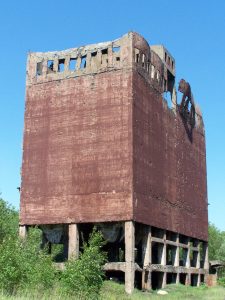 Ruins of the German Synthetic Petrol Plant (Wikipedia Image)
Ruins of the German Synthetic Petrol Plant (Wikipedia Image)
The Germans conquered most of Europe, and Romania had only a sizeable amount of oil. Romania’s Ploiești petrol supplies complex, plus the German synthetic oil, was slightly more than one-half of the Russian oil supplies.
Then, as they overran Russia, they focused on the huge oil fields near the Caucasus (Maikop, Grozny, and Baku). As part of the Stalingrad campaign, they briefly held these fields. Then, as part of the Russian Stalingrad Blitzkrieg, they lost them, never to regain them.
1943 Kursk
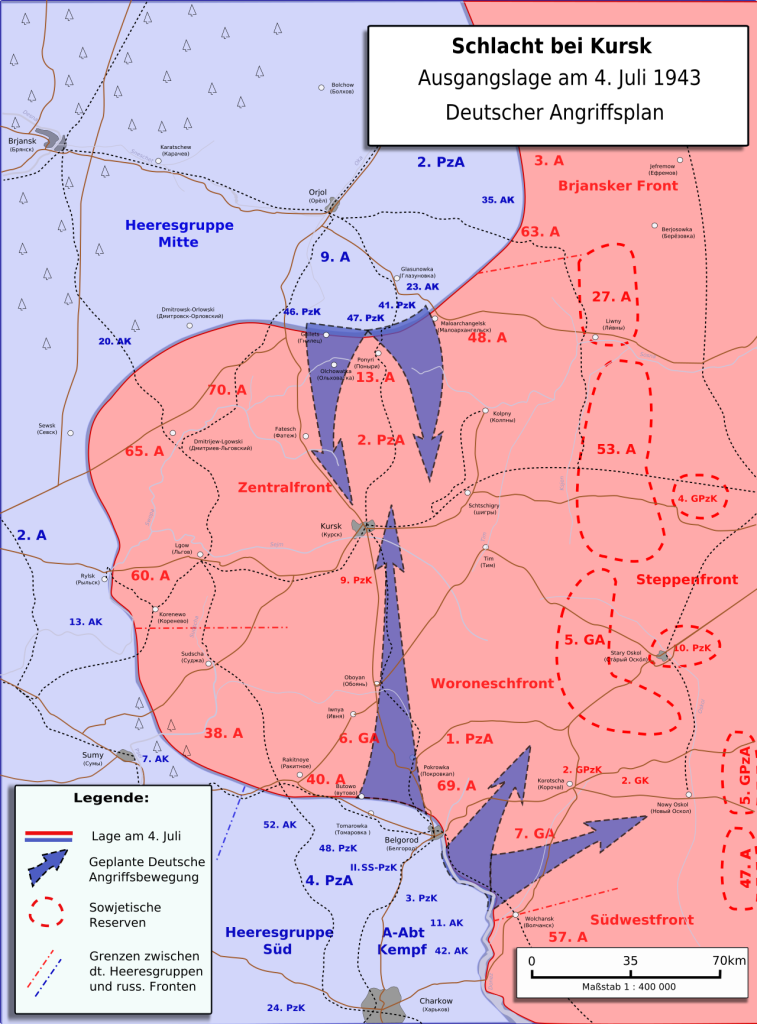 The Bulge at Kursk (Wikipedia Image)
The Bulge at Kursk (Wikipedia Image)
The decisive point in the war in 1943 might have been Kursk, or Operation Citadel, 285 miles south of Moscow. The Soviets had this prominent bulge extending from Kursk, and Hitler wanted to take it, encircling all the Russian troops. All the Field Marshals, including Erich von Manstein, wanted a strategic defense until the Germans could equal the Soviets’ armor levels; Hitler wanted the Kursk offensive to advance in the late spring of 1943. The result was a catastrophic failure for the Germans, as Soviet preparations and intelligence thwarted the attack, marking the beginning of Germany’s steady retreat on the Eastern Front.
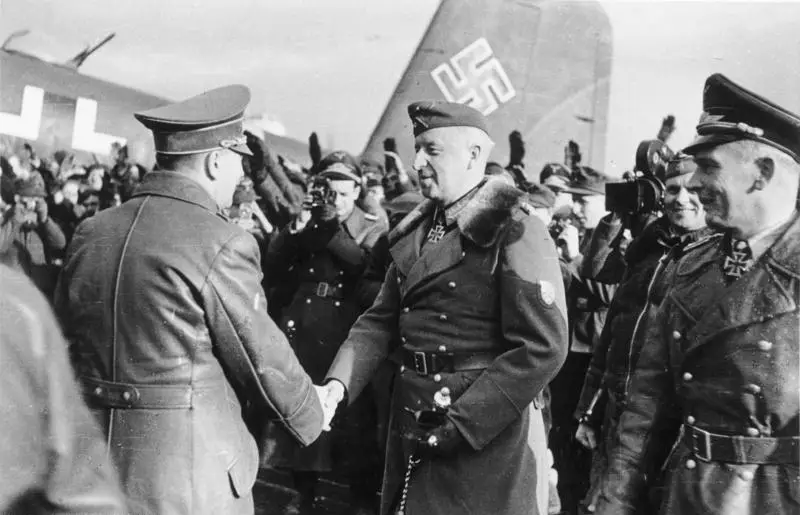
Hitler and Erich von Manstein Meet (Wikipedia Image)
Hitler was a megalomaniac who abhorred most of humankind and did not trust anybody. That being said, Hitler’s Erich von Manstein was an extraordinary and trusted (as far as that was possible) Field Marshal.
Back in France, in 1940, Erich von Manstein proposed that Hitler take the panzer through the Ardennes to Sedan and onto France’s coast. Hitler was immediately enamored with the plan — and it worked. Hitler apologized to Erich von Manstein for the Stalingrad defeat! After the Battle of Stalingrad, when the Russian victories caused participating Soviet units to overextend themselves, Manstein’s counteroffensive in the Third Battle of Kharkov [Kharkiv] (February–March 1943) regained substantial territory. It destroyed three Soviet armies (approximately 80,000 troops) and caused the retreat of three others.
Manstein said:
“Southern Army Group had brought these considerations to the notice of OKH [German High Command] and Hitler on a number of occasions [1943]. What the latter ultimately had to decide was whether the overall situation allowed us to wait for the Russians to start an offensive and then to hit them hard ‘on the backhand’ at the first good opportunity [like the Third Battle of Kharov] or whether we should attack as early as possible ourselves and — still within the framework of a strategic defensive — strike a limited blow ‘on the forehand.’”
Besides Manstein’s desire to hold a defensive posture, Hitler had another problem with Kursk. The new German armor wasn’t battle-tested. The principal modern tanks, the Panther, Tiger, and Ferdinand, were still experiencing issues with their transmissions and proved mechanically unreliable.
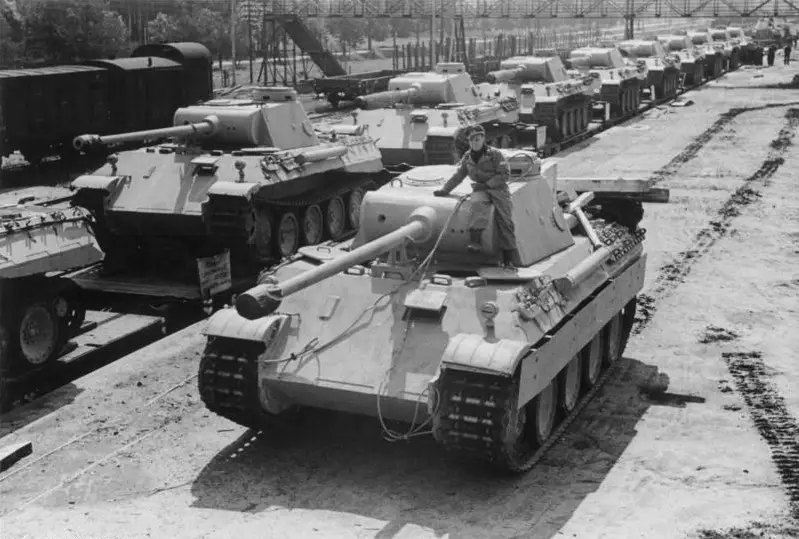
Panther Tanks (Wikipedia Image)
An additional problem Hitler faced was that of the Russian Partisans. Wiki states, “The German Army devoted about 10 percent of its overall strength in fighting partisans, including 15 regular and security divisions and 144 security and police battalions.” The Russian Partisans would grow from 220,000 in 1942 to 550,000 in 1943.
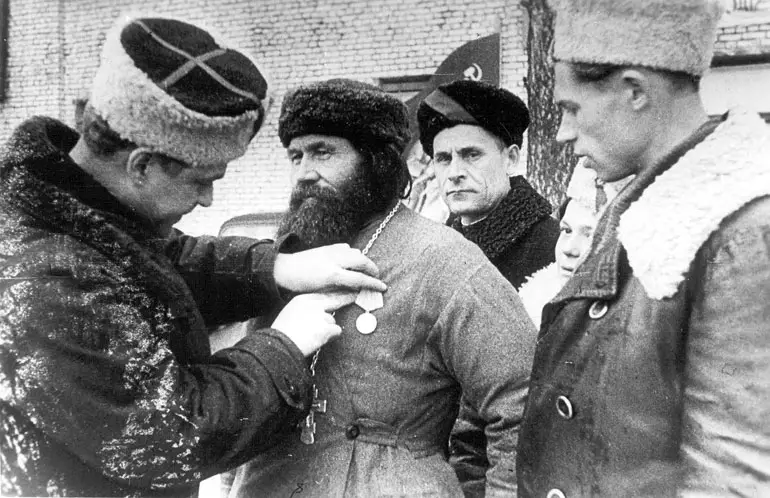 A Partisan Village Priest Being Awarded the Medal in Ukraine (Wikipedia Image)
A Partisan Village Priest Being Awarded the Medal in Ukraine (Wikipedia Image)
Georgy Zhukov wrote on 8 April in a letter to Stalin:
“In the first phase, the enemy, collecting their best forces—including 13–15 tank divisions and with the support of a large number of aircraft—will strike Kursk with their Kromski-Oral grouping from the north-east and their Belgorod-Kharkov [Belgorod-Kharkiv] grouping from the south-east… I consider it inadvisable for our forces to go over to an offensive shortly to forestall the enemy. It would be better to make the enemy exhaust himself against our defenses, knock out his tanks, and then, bringing up fresh reserves, go over to the general offensive, which would finally finish off his main force.”
The Wiki article says:
“The Central and Voronezh Fronts each constructed three main defensive belts in their sectors, each subdivided into several zones of fortification. The Soviets employed the labor of over 300,000 civilians. Fortifying each belt was an interconnected web of minefields, barbed-wire fences, anti-tank ditches, deep entrenchments for infantry, anti-tank obstacles, dug-in armored vehicles, and machine-gun bunkers.”
Despite what Manstein said about “on the forehand” and “on the backhand,” which Hitler rejected, and although the Russians had time to entrench, Hitler still wanted the Kursk offensive to go forward!
The Russians and Germans had amassed in the Kursk salient:
https://en.wikipedia.org/wiki/Battle_of_Kursk
Russians Germans
Men 1,910,361 780,900
Tanks 5,181 2,928
Artillery 25,013 9,966
Aircraft 3,150 2,110
Erich von Manstein, on the southern front out of Kharkov [Kharkiv], and Gunther Hans von Kluge, on the northern front out of Orel, were in charge of the operation in the Kursk bulge.
Finally, the battle of Kursk opened on 4 July 1943.
The 259 Panthers, 211 Tigers, and the 91 Ferdinand (nicknamed the “Elefant”) had long-range cannons (3km) and weighed over 45, 50, and 65 tons, respectively. The T-34 had a short cannon (about half the range of a longer cannon) and weighed 33.5 tons. All three German state-of-the-art tanks would destroy several hundred Russian tanks from long range in the first couple of days.
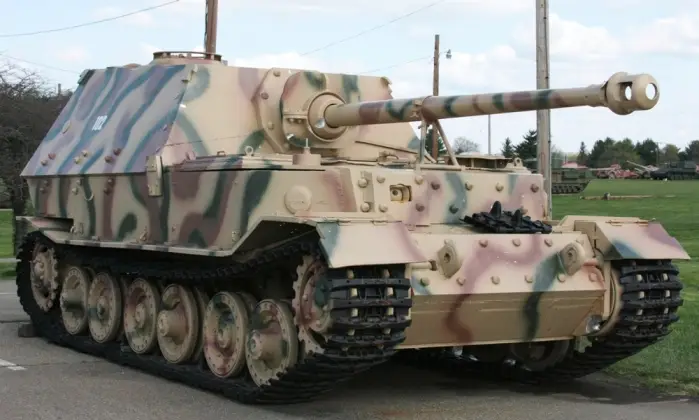 Restored Ferdinand (Elefant) from Ft. Lee, Virginia (Wikipedia Image)
Restored Ferdinand (Elefant) from Ft. Lee, Virginia (Wikipedia Image)
An article by Air & Space says:
“But at the end of the first day of combat—5 July—Soviet premier Joseph Stalin was focused on another contest that he knew would affect the outcome of the battle for Kursk. He called on one of his commanders, Konstantin Rokossovsky, to account for the day’s action. Still, before Rokossovsky concluded his report, Stalin interrupted: ‘Do we have control of the air, or not?’ Rokossovsky could only promise ‘that tomorrow they [the Russians] would.’”
The Germans had a new Stuka Ju 87 Gs with 37 mm tank cannons. Hans-Ulrich Rudel, the leader of Ju 87, developed an almost surefire way of destroying the enemy tanks:
“But the best target is in the stern. It is there that the engine is housed, and the necessity for cooling this power center permits only thin armor-plating tanks by coming in from behind and aiming at the rear of the T-34 tank where the engine was mounted and the thinnest armor plating…. When its engine is running, a tank is easily recognizable from the air by the blue fumes of the exhaust.”
On 12 July 1943, Rudel claimed 12 Soviet tanks in one day! That is why Tankograd put out so many engines for the T-34 tank.
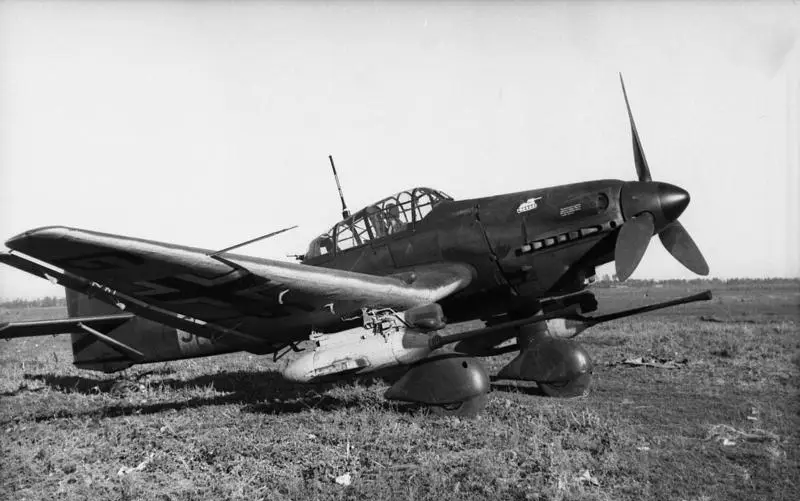
Stuka Ju 87 Gs with 37 mm Tank Cannons (Wikipedia Image)
Unfortunately, the German aircraft began to run out of petrol. The New World Encyclopedia said, “The number of Stuka and bomber sorties was declining from as early as 6 July. On 5 July, these groups had flown 647 and 582 sorties; by 6 July, this had dropped to 289 and 164 missions.”
To make matters worse than the German oil shortage, Russian Partisans almost ceaselessly attacked German oil trains and trucks in Russia.
The Russians gradually gained air superiority over the battlefield.
Air & Space says:
“Each night, the Soviets analyzed the day’s results and adjusted. They allowed fighter pilots to take more independent action. Flights were split into echelons by altitude. Fighter groups were allowed to roam ahead freely over German-held territory in sweeps similar to the German tactic. The turning point in the air contest came on 9 July, days ahead of positive results on the ground. Soviet fighters decimated the Stuka ranks.”
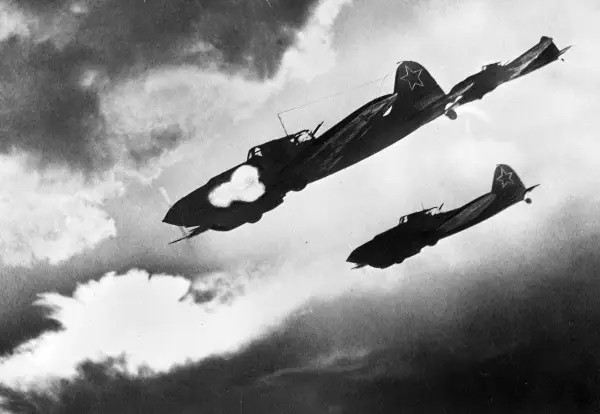 Soviet Ilyushin Il-2 Shturmovik planes attacking during the Battle of Kursk (Wikipedia Image)
Soviet Ilyushin Il-2 Shturmovik planes attacking during the Battle of Kursk (Wikipedia Image)
Von Kluge stalled after a few days, and Erich Von Manstein stalled after a week. The Germans were demoralized by the success of Soviet defense belts, their lack of reinforcements, and their lack of air support.
Georgy Zhukov was right!
According to Heinz Guderian, the Inspector General of Armored Troops:
“Due to enemy action and mechanical breakdowns, the combat strength sank rapidly during the first few days. By the evening of 10 July, there were only ten operational Panthers on the frontline. 25 Panthers had been lost as total write-offs (23 were hit and burnt, and two had caught fire during the approach march). A hundred Panthers needed repair (56 were damaged by hits and mines, and 44 by mechanical breakdown).”
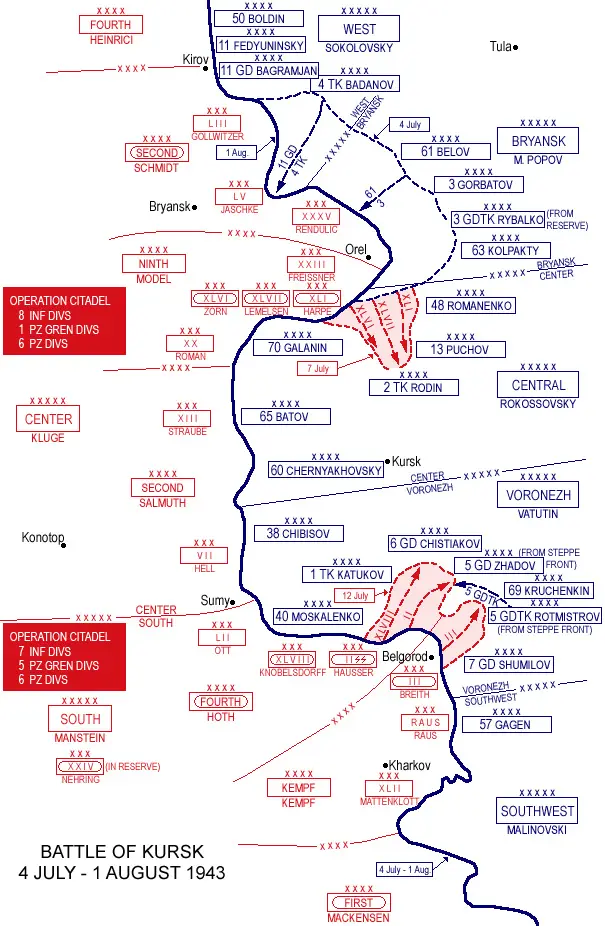
Kluge and Manstein Attack (Wikipedia Image)
The Russians launched their counteroffensive on 12 July. The Soviets soon figured out how to defeat the modern tanks with the T-34. They could easily knock the Panthers and Tigers out, provided they closed with them quickly, got on their side or rear, and then easily penetrated the German tanks with their small cannon.
According to the Wiki article, The Battle of Kursk:
“Before the Germans ended their offensive at Kursk, the Soviets began their counteroffensive and pushed the Germans back into a steady retreat. The German Army was forced into a fighting retreat and increasingly lost tanks in combat and to abandoned, damaged, or destroyed vehicles. Thus, on 11 August 1943, the number of write-offs in Panthers swelled to 156, with only nine operational. ”
The Americans were busy on the Western Front. Two Panzer divisions were recalled to Sicily because of the American invasion. On 24 July, British bombers raided Hamburg by night and started a firestorm. And lastly, the American attacks against Ploiești in August curtailed the refineries’ oil output [five Medals of Honor were awarded, the most for any American military action].
Smolensk fell in Russia on 25 September 1943, and Kiev [Kyiv] fell in November 1943.
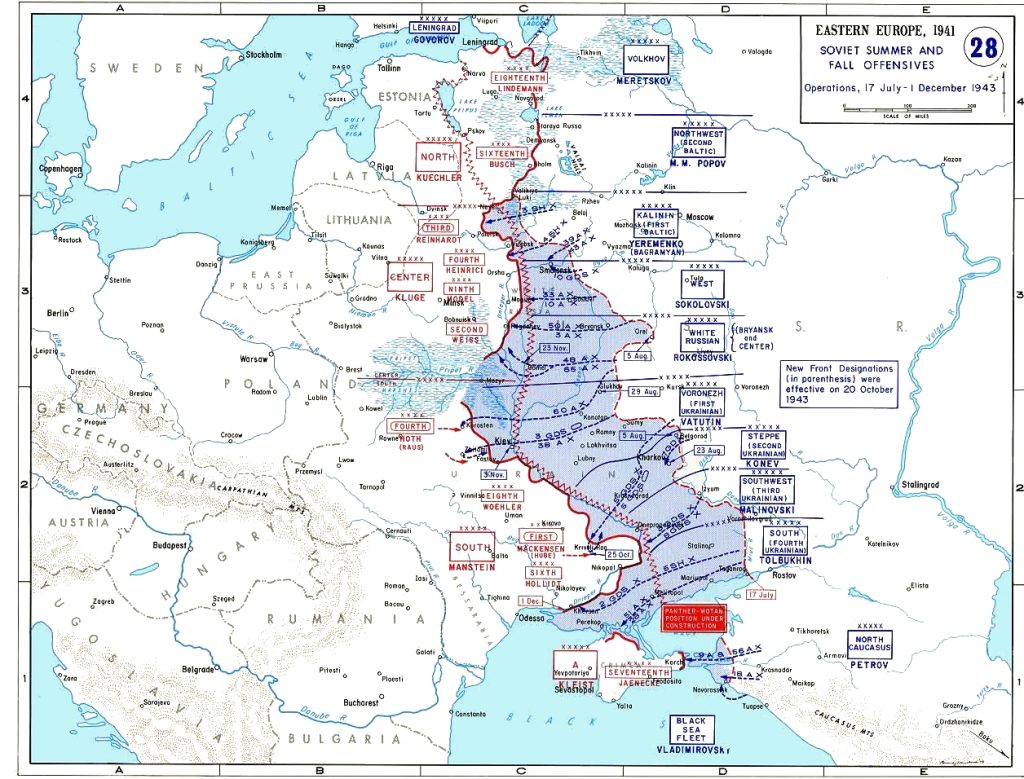 1943 Fall Soviet Offensive (Wikipedia Image)
1943 Fall Soviet Offensive (Wikipedia Image)
Without American involvement in the war against the Nazis, the German military would have been significantly reinforced on the Eastern Front. The Luftwaffe could have deployed thousands more planes, including the deadly Stuka Ju 87 G dive bombers, which were effective against Soviet tanks like the T-34. Additionally, Germany’s war machine would have functioned at a higher capacity with more fuel available. This could have led to a large portion of the T-34 forces being destroyed, severely hampering Soviet offensives. Without the critical support of the T-34 tanks, the Soviet Union would have been forced to delay major offensives, likely pushing them to wait until the following year when the more advanced T-34-85, with its upgraded armor and firepower, could resume the offensive against the Germans. This delay could have shifted the balance on the Eastern Front, allowing Germany to consolidate its position further.
1944
Without lend-lease, and If America had not entered the war, this summarizes how the German and Soviet military forces would have compared on the Eastern Front:
Aircraft:
- The Russians and the Germans each produced around 40,000 aircraft.
- The Russians had to get aluminum from the Americans to manufacture this many. Without the US aluminum, Russia would have ⅓ fewer aircraft.
- The Germans would have had thousands of additional aircraft available in the east if they were not fighting the Americans.
- The Russians received 53% of their high-octane fuel, crucial for aircraft, from Lend-Lease. Without this, Russian air support would have significantly reduced efficiency, slowing down.
- The Germans had advanced jet aircraft, the ME-262, providing tactical superiority, and Russia had no counter!
- The German pilots were doubtless better than their Soviet counterparts.
- These factors would have led to a gradual increase in German air power and superiority after 1943, culminating in the Battle of Kursk. German production and quality would exceed those of the Russians by the end of 1944.
I would give the Germans an aircraft advantage.
Armies:
- The Russians would have three times as many troops and artillery as the Germans.
- Russians produced 28,936 tanks, and the Germans made 27,300.
- The Soviet and German armor was equal, considering the Russians introduced the T-34-85 and “Joseph Stalin” tanks in 1944.
- The Germans would still be tied down with the British.
- Georgy Zhukov was a superior commander to Hitler!
I have to give the Russians an advantage in the army.
Supply:
- Without American rail transport, trucks, field telephones, and dehydrated food from Lend-Lease, the Soviets would have been slow to move their units, especially 60 mobile units, from one front to another.
- To manufacture that inferior equipment, they would steal production from another part of the Soviet military.
- The Soviet Blitzkrieg would not materialize. Due to insufficient supplies, Soviet mobile units could travel only 10 to 25 kilometers per day rather than 30 to 40.
- Concurrently, the Germans would continue to have oil shortages, and the Partisans all over Russia would still blow up German locomotives, freight cars, and trucks.
I give the supply between the Russians and Germans a draw.
Conclusions
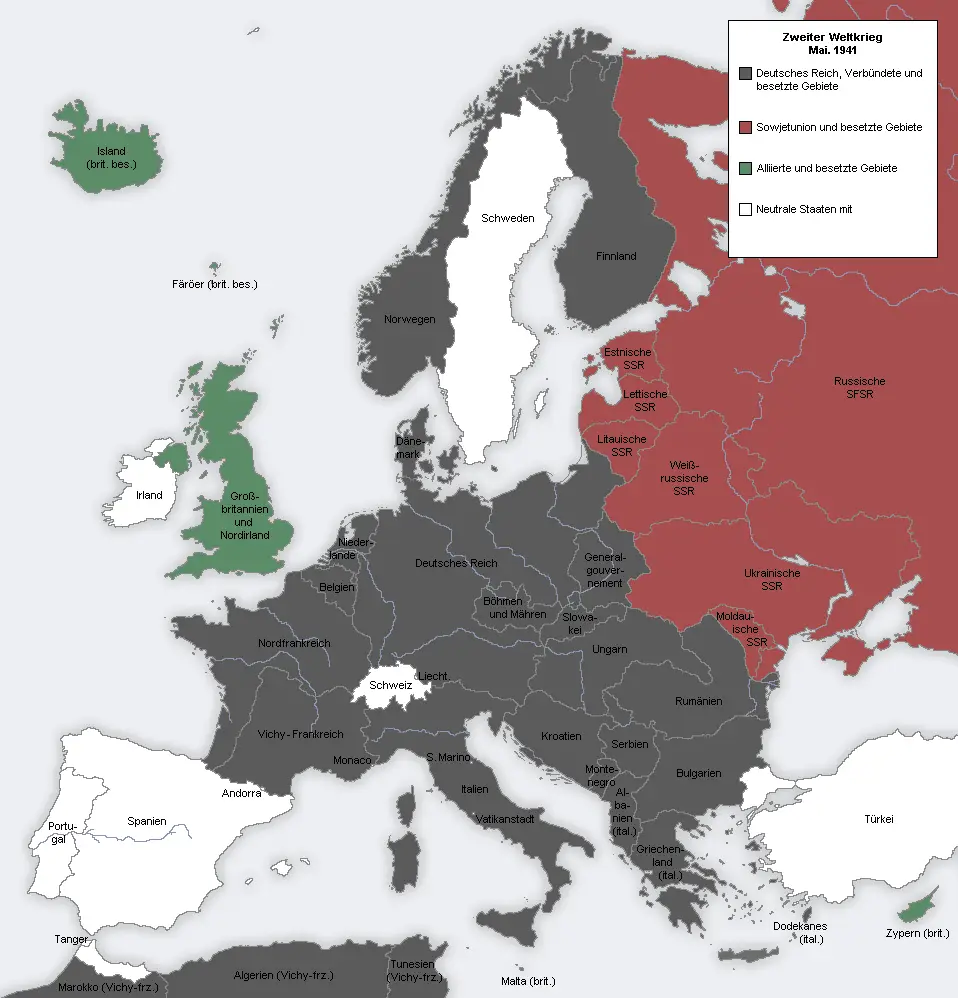 Barbarossa Start Line (Gray and Red) (Wikipedia Image)
Barbarossa Start Line (Gray and Red) (Wikipedia Image)
If America had not entered the war, many historians believe that Soviet General Georgy Zhukov would still have succeeded in driving the Germans out of Russia, albeit at a slower, costlier pace. It is speculated that the Soviet counteroffensive would have likely pushed the Germans back to a line near Eastern Europe, roughly corresponding to the start of Operation Barbarossa in June 1941. This could have resulted in the Germans retaining control over much of Eastern Europe. Still, without the resources and industrial might of the United States, the Soviets would have lacked the necessary support for major offensives beyond their own borders.
The fighting would have remained fierce, but without the Western Front opening up, the Soviets might have found it challenging to advance significantly further into German-held territory. As a result, the war between Germany and the Soviet Union could have reached a stalemate, with neither side able to deliver a decisive blow. The absence of American economic and military support, such as through the Lend-Lease program, would have critically weakened Soviet supply lines and logistics, potentially prolonging the conflict and changing the balance of power in post-war Europe.
The reasons for that are these:
- The German supply lines would have improved as the Germans moved west into Eastern Europe.
- Russians would have had the men but not the extra materials for supply or transport to move quickly.
- The Partisan threat would have been significantly reduced (no longer on Soviet soil).
- The boundary between Germany and Russia, extending from the Baltic Sea to the Black Sea, would have reached the minimum, most defensible distance.
- Along approximately half of this route, in Hungary and Romania, the terrain would have been mountainous and rough, further strengthening the Germans’ defensive position.
- Germans would have increased incentive to fight for the homeland with their backs to East Prussia.
What happens next is impossible to predict:
- Perhaps Hitler and Stalin would have settled into a peace treaty.
- The Nazis may have produced an Atomic Bomb after some years, securing world dominance.
- What would the British do without active military support from the US? Could they maintain their Empire?
- What would happen with the Japanese Empire, Asia, Southeast Asia, and the Pacific?
Yes, the entry of the United States into World War II was a decisive factor in the defeat of both Nazi Germany and Imperial Japan. America’s industrial might, economic power, and military resources gave the Allies an overwhelming advantage. The U.S. provided crucial support through the Lend-Lease program to nations like Britain and the Soviet Union, allowing them to continue the fight. The opening of the Western Front with the D-Day invasion, combined with the Soviet offensive in the East, broke the back of Nazi Germany.
In the Pacific, the U.S. Navy and Marines led a brutal island-hopping campaign, eventually bringing the fight to Japan’s doorstep. With technological advances like the development of the atomic bomb and sheer logistical strength, the U.S. ensured the Axis powers were defeated. The American commitment to fighting on both fronts was essential in bringing World War II to a close and restoring peace.
Summary (Emoji)
Here is an emoji-enhanced, polished, and clearly structured version of your excellent WWII alternate-history scenario:
🇺🇸❌⚔️ Speculation: If America Did Not Enter WWII — Who Wins, 🇷🇺 the Soviets or 🇩🇪 the Germans?
(Britain still fights; the U.S. stays neutral after Japan avoids Pearl Harbor.)
🧭 Setting the Stage — Early 1943
-
🇩🇪 Germany has suffered major defeats at Moscow (1941) and Stalingrad (1943).
-
🇷🇺 Marshal Georgy Zhukov is rising as the USSR’s most important commander.
-
🇯🇵 Japan does not attack Pearl Harbor → 🇺🇸 America remains neutral.
-
🇬🇧 Britain continues the war alone in the West.
-
🇺🇸 America restricts aid funding only to Britain → USSR receives almost no Lend-Lease.
-
🛡️ Germany focuses all elite forces on the Eastern Front.
This creates a radically different war after 1943.
🚚🇷🇺 1. The Soviet Union Without Lend-Lease = A Struggling War Machine
Lend-Lease was not decisive in 1941–42 — but from 1943 onward, it became the backbone of Soviet mobility.
❗ The USSR loses its “war-movers”:
-
🚂 ~2,000 American locomotives
-
🚛 400,000+ trucks (especially Studebakers)
-
🚃 11,000 rail cars
-
⛽ High-octane aviation fuel
-
🧨 Aluminum, copper, explosives
-
🥫 Millions of tons of food
📉 Consequences:
-
The Red Army becomes slow, tied to railways.
-
Deep encirclements like Operation Bagration (1944) become impossible.
-
Soviet air power loses technological and numerical edge.
-
Strategic mobility collapses across vast distances.
Result:
🇷🇺 The USSR can defend but struggles to launch large offensives.
🇩🇪⚔️ 2. Germany Without the U.S. in the War Becomes Far More Dangerous
🏭 A. No U.S.–British strategic bombing = much stronger German industry
Without the U.S. 8th Air Force:
-
🏭 Synthetic fuel plants keep running.
-
🔩 Ball-bearing factories intact.
-
✈️ Me 262 jet fighter development accelerates.
-
🛠️ German tank production rises instead of collapsing.
🪖 B. No Western Front
No Sicily.
No Italy.
No Normandy.
No Ardennes.
So German combat power is concentrated entirely in the East:
-
🛡️ SS Panzer divisions stay intact.
-
🛩️ Luftwaffe fighter aces remain in the East.
-
🎖️ Elite infantry and armored units aren’t lost in Africa or France.
Result:
🇩🇪 Germany becomes far stronger defensively on the Eastern Front.
⚖️ 3. The Most Likely Outcome: A Prolonged, Bloody Stalemate
With a slow Soviet army and a fortified German army:
🟥 1943–44: No Soviet Breakthrough at Kursk
-
Lack of trucks = weaker Soviet reserves.
-
German armor and air are concentrated in the East.
-
Kursk becomes a German stalemate or even a marginal German defensive success.
🟧 1944–45: No Bagration, No Collapse of German Army Group Center
-
Without mobility and fuel, the Soviets cannot execute deep “Operational Art.”
-
Front lines stabilize from the Baltic to the Black Sea.
🟨 1945–46: Neither Side Has Knockout Power
-
🇷🇺 USSR has manpower but no mobility.
-
🇩🇪 Germany has technology and defensive depth, but insufficient resources to conquer the USSR.
🤝 4. Eventual Outcome: Negotiated Peace or Frozen Eastern Front
Most likely scenarios:
1️⃣ Prolonged War of Attrition (Most Likely)
A grinding stalemate with no decisive movement — a “WWI in the East.”
2️⃣ Negotiated Peace
Both sides were eventually exhausted:
-
🇷🇺 USSR demands return of 1941 borders.
-
🇩🇪 Germany wants recognition of gains in Belarus/Ukraine.
-
Result: A divided Eastern Europe and a weakened USSR.
3️⃣ German Victory (Unlikely but Not Impossible)
Germany cannot conquer all of Russia, but might force Stalin to accept a harsh peace if:
-
Soviet logistics collapse
-
German jets and armor achieve local superiority
But a full German conquest is still fantastically unlikely.
🧩 Final Judgment
🟦 Could the Soviets win?
❌ Not without Lend-Lease.
Their offensives lose mobility, trucks, fuel, and aircraft quality.
🟥 Could Germany win?
❌ Not completely.
Russia is too large; German manpower is too limited.
🟨 Most Likely Outcome: A Bloody, Decade-Long Stalemate
A hardened front line from Leningrad to the Black Sea.
Millions more dead.
No decisive victory.
🌍 The World After This Alternate WWII
-
🇩🇪 Germany remains dominant in Central Europe.
-
🇷🇺 USSR becomes traumatized, isolated, and weakened.
-
🇬🇧 Britain remains the only Western power in the war.
-
❌ No NATO, no Marshall Plan, no Cold War as we know it.
-
🇯🇵 Japan has dominated East Asia longer with no U.S. opposition.
A drastically different 20th century.
If you’d like, I can produce:
📅 A year-by-year alternate timeline (1943–60)
🗺️ An alternate map of Europe after the negotiated peace
⚔️ A comparison of German and Soviet forces in this alternate 1944
📘 A short story version of this scenario
Just tell me!

